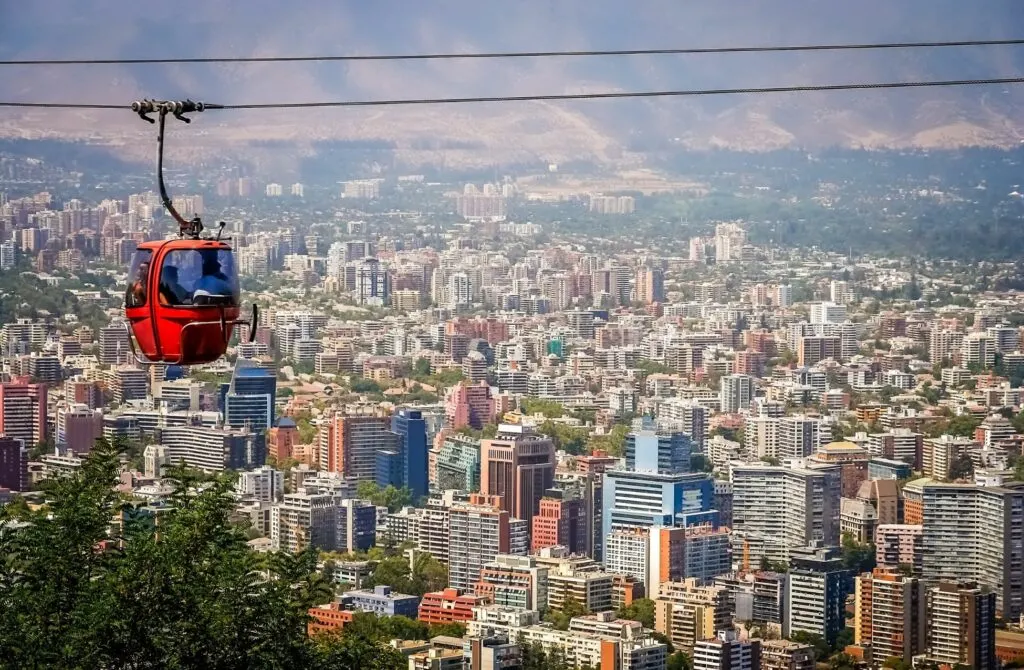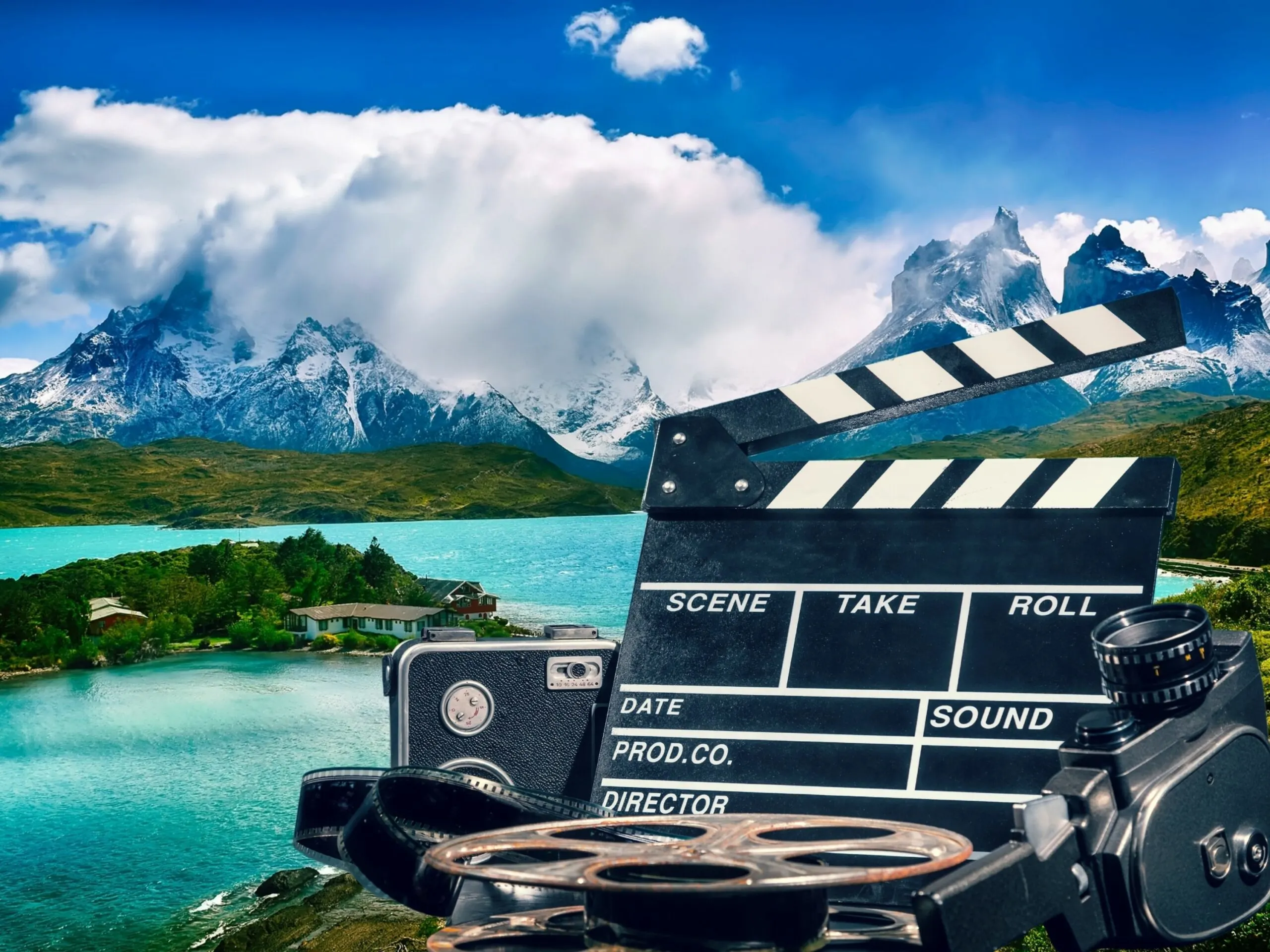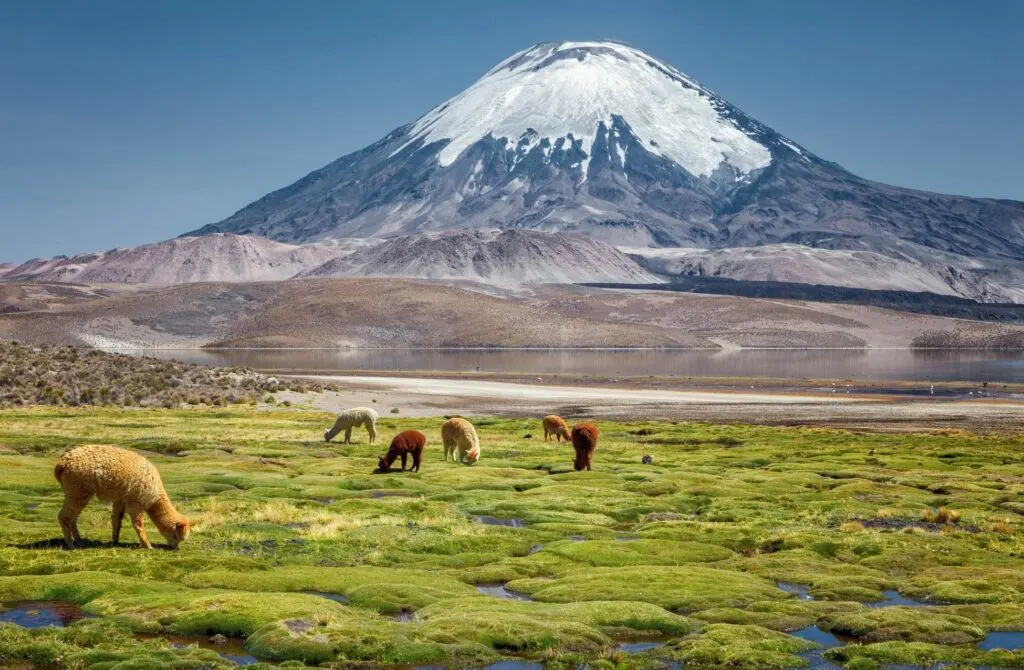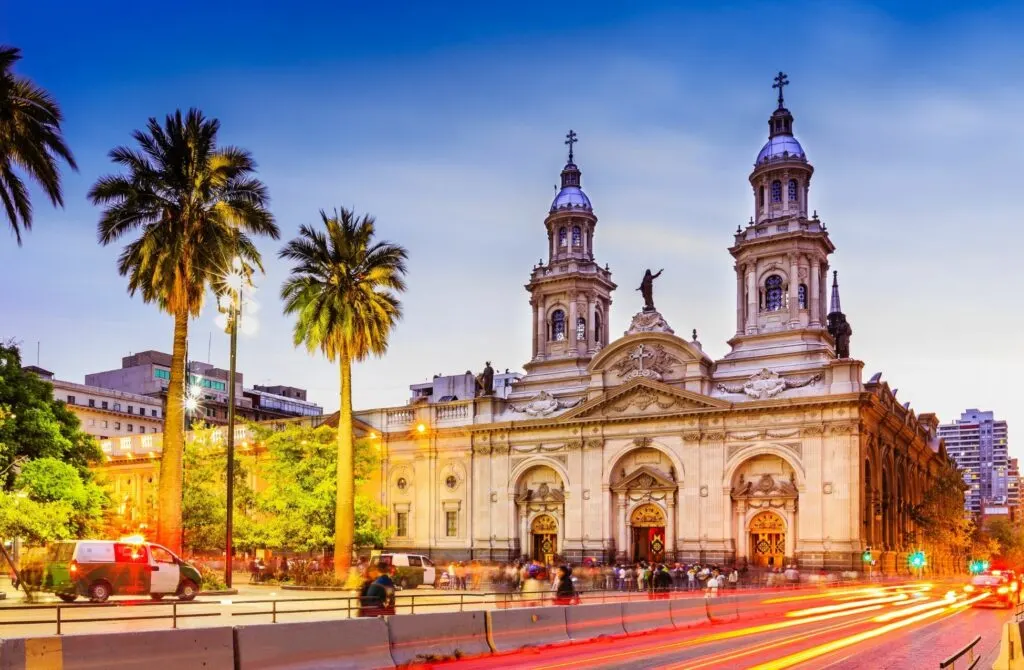Sofia De Vera combines a heartfelt passion for cinema with over 15 years of critiquing for esteemed film publications, wielding academic credentials from the University of Southern California and New York University, to serve as your personal guide through the enchanting worlds of film and television. Her full guest bio can be found here.
Chile is a country full of wonders. Despite its narrow territory, it contains an array of different landscapes to charm all kinds of people. From its imposing Cordillera de los Andes, to the beautiful beaches that overlook the Pacific Ocean, it is the perfect place for outdoor people to enjoy nature.
Chile is also home to modern cities, such as the capital, Santiago de Chile, where many renowned artists have lived and studied. Poets such as Pablo Neruda and Nicanor Parra have walked through this street, as well as many famous actors and directors. Alejandro Jodorowsky, Pablo Larraín, and Pedro Pascal, to name a few, are some of the talents that have emerged from the country.
And it is these emblematic elements that have attracted (and continue to attract) storytellers throughout the history of modern cinema and today the spirit of Chile has been immortalized in different films resulting in a wonderfully intricate and excellent array of movies set in Chile.
We love this because one of the reasons why we watch movies is that they are an excellent way to travel to different places while staying at home – and to determine if a destination elicits that oh-so-important spirit of wanderlust in us before ever investing in a ticket there.

This is what motivated us to visit Philadelphia, Atlanta, and Russia– among many other places. Then there are those glorious moments you can step out in a real-world location and feel spontaneously transported back inside to an iconic movie scene (thus the abiding popularity of visiting Middle Earth / New Zealand or James Bond’s Skyfall).
In Chile, of course, such magical places exist too like Easter Island, Cajon del Maipo, the Atacama Salt Flats and many other iconic landmarks of Chile.
In the following paragraphs, we will take a dive into some of Chile’s best films and the amazing places where they take place.
Wondering where to watch? It depends on where you live in the world and which streaming services you have. We link to the streaming service we watch on in each case - be it Netflix, Amazon Prime, Apple TV+, or elsewhere.
You can get one month free of Amazon Prime (or a 6-month trial for students) of Amazon Prime and also get immediate access to FREE Two Day shipping, Amazon Video, and Music. While you won't be charged for your free trial, you'll be upgraded to a paid membership plan automatically at the end of the trial period - though if you have already binged all these, you could just cancel before the trial ends.
Apple TV+ also has a one-week trial, and Hulu has a one-month trial (which can be bundled with Disney!). Another option might be using a VPN to access Netflix titles locked to other regions. Netflix is now available in more than 190 countries worldwide and each country has a different library and availability. US Netflix is (understandably) one of the best.
While we wish everything could just be in one place - for now, it seems these are the best streaming platforms to watch on.
Page Contents
Neruda (2016)
Neruda (2016), by Pablo Larraín, could be considered a biopic of the famous Chilean poeta, Pablo Neruda. However, this film plays with the idea of a biography.
The story begins in 1948, when, in the midst of the Cold War, communism began to be prosecuted in the country. Neruda, who was at the time a senator as well as a writer, had to go into hiding to avoid being sent to prison, or even worse, killed, due to his political ideals. The film focuses not only on Neruda and his wife, Delia, who accompanied during this time in hiding, but it disrupts the notion of a biography by installing his prosecutor as one of the main characters, inspector Óscar Peluchonneau, who was designated by the president to chase after the poet.
Both Delia and Peluchonneau begin to question their roles in Neruda’s life. Who is really the main actor and who has a supporting role in this story? Peluchonneau and his team romanticize their quest in search of the poet, while Delia expresses the terrors of those being chased. Larraín manages to alternate between their perspectives, reshaping the plot as a film noir, from the detective’s point of view, or as a political drama, from Neruda’s side.
While escaping, the poet and his wife travel across many parts of the country. In their passage through the mountains the beautiful region of La Araucanía is displayed. The Villarica Volcano is located in this area, one of the most active volcanos in the world. Many activities are offered there, such as trekking, escalating, skiing or snowboarding, depending on the time of the year.
Also in this region, you will find the city of Pucón, a very popular destination for tourists, because of its abundance of hot springs. You can combine a hike in the mountain with a relaxing soak in the pools.
The Club (2015)
Also by Pablo Larraín who has directed many of the best movies set in Chile, The Club [El club] (2015) is a disturbing thriller about religion, crimes, and men in power.
In this film, we observe four catholic priests who have been sent to a secluded home in a beach town, where they will repent for their crimes. However, they don’t seem to be truly aware of the evils they have committed, and it’s not until a fifth man arrives, a pedophile, that they are forced to confront their own sin and their relationship with the Church and with God.
The film was shot in La Boca, which is located in the Navidad (“Christmas”) commune in the central region of Chile. In the film, the town is charged with a mysterious atmosphere, that contributes to the claustrophobia that the characters and the viewers alike feel under the pressure of the secrets. In spite of it, it’s impossible to ignore the beauty and calmness of the ocean that roams in the back.
In fact, the town has more houses than inhabitants, and this is due to it being a tourist center. Every year, lots of people are attracted to this beautiful place, where you can admire the mouth of the Rapel river, practice windsurf and try some delicacies provided by the local fishermen.
The Club doesn’t show the fun side of La Boca, but it perfectly paints the melancholic aspects that every touristic center holds while it’s not the high season. The empty streets and the silent beach only favor the suspense and fear that grip the viewer as we fight to uncover what these men’s sins were and if they will ever repent.
The Sky, the Earth and the Rain (2008)
The Sky, the Earth and the Rain [El cielo, la tierra y la lluvia] (2008), by José Luis Torres Leiva, is a film about lonely lives in the Chilean south. This movie has little to no plot and even less dialogue. Instead, the camera focuses on the movements of the four main characters as they roam across the land in their everyday lives.
The landscape and the silence combine to create a calm, contemplative atmosphere that engulfs the viewer’s mind. We get to see the beautiful south of Chile in autumn, and one can almost smell the fallen leaves and the rain.
This is not a fast-paced film. It requires patience and the will to immerse oneself in the trivial activities that Ana, Verónica, Marta, and Toro perform. Ana and Verónica are two friends. Verónica seems confident and independent, Ana must take care of her bed-ridden mother. She works cleaning Toro’s house. He lives in a secluded area, apart from everyone by his own choice. Marta suffers from mental illness and lives with his brother, a boxer. The four of them cross paths, while they look for romance, sex, and family affection.
Leiva’s film is a beautiful rendition of loneliness and the vast Chilean south. The landscape submerges us in a hazy, thoughtful state, and inspires us to slow down and admire the charm and elegance of routine.
Under Construction: Or the Place I Was Born No Longer Exists (2000)
Under Construction [Aquí se construye] (2000), by Ignacio Agüero, is both a fictional story and a documentary about a neighborhood house about to be demolished in order to construct a building. The movie follows a neighbor of Providencia, a commune in Santiago de Chile, as he observes the demolition of a house near his own home.
Agüero captures the heartbreak and sorrow of the passage of time in a residential area. This small structural modification multiplies in a myriad of changes that exhibit the perils of life in the modern world. The neighbors that had always lived in Providencia are suddenly replaced by more and newer neighbors that don’t have any interest in being known, the new building blocks the light in the protagonist’s home, and even the birds have abandoned their nests, never to return.
The movie was shot in the span of three years, since the script required that the construction process be enregistered from start to finish. It perfectly expresses the melancholy and nostalgia of seeing the places where you grew up being torn down in order to create something new. The violence of the destruction is shown in a calm way that gives the sense of progress being inevitable, while also feeling attached to the things we lose in order to achieve it.
Providencia is actually the commune with the best quality of life in the country. While modernization might have erased some of the most traditional landmarks and ways of living, it has also brought many benefits to the region. Sanhattan, a neighborhood that takes its name from the combination of Santiago and Manhattan, is in this area. There you can find Santiago’s World Trade Center, as well as the Costanera Center, an impressive architectonical project, that consists of four buildings, the main one being the Great Tower of Santiago.
Los Reyes (2018)
Some movies are just too unique to be categorized. This is the case with Los reyes (“The kings”) (2018), by Iván Osnovikoff and Bettina Perut. The main characters are two stray dogs, Football and Chola. They are the kings of the skatepark Los Reyes in Santiago de Chile, a place where dogs and teenagers alike can escape from the world of adult responsibilities and follow their passions.
Art and traveling have many things in common. One of them is creating a sense of estrangement. This film manages to do just that, by adopting the dogs’ point of view. As spectators, we get to experience the city in a refreshing way. The humans that circulate the skate park become ghosts, we can listen to their conversations, but we never get a complete sense of who they are since we can’t even see their faces most of the time.
The skatepark Los Reyes is the oldest one in Santiago and through the film, it becomes a recipient for the teenagers’ worries, anxieties, joys, and triumphs. They go there to skate but also to talk about different problems: aspirations, relationships, drug use, and the expectations the adult’s place on them.
Los reyes also shows what life is like for a pair of stray dogs in the city. It’s simultaneously heartwarming and sad. Football and Chola have their share of fun, but they must overcome the risks that come from living in the streets. One of the best movies set in Chile, this film gives us a tangible sense of what everyday life is like in Santiago de Chile. It conveys the liveliness and kindness of its people, and it also shows the universal passion for a sport that attracts teenagers and grown-ups all over the world.
My Best Enemy (2005)
My Best Enemy [Mi mejor enemigo](2005), by Alex Bowen, is -to an extent- a war film. Bowen takes a deep dive into the conflicted relationship between Chile and Argentina. The story begins in 1978 when a group of Chilean soldiers gets completely lost in the wilderness. They don’t know whether they are in their own territory or if they’ve reached Argentinian territory. The soldiers decide to dig a trench to take refuge until they can figure out their next step. However, their plan is dismantled when a group of Argentinian soldiers finds them and digs a trench right across the Chilean one.
In the 1970s, both countries were under dictatorial governments: Pinochet, in Chile, and Videla, in Argentina. The conflict over the Beagle canal that took place during this time was just another expression of the exacerbated nationalism these types of governments encouraged, as well as their poor decisions regarding their citizens’ wellbeing.
The film is not a traditional war story, in the sense that there’s little to no action. Nevertheless, it addresses the many faces of armed conflict: the uncertainty, the waiting, the longing, the pride, and the confusion of trying to defend a piece of land.
In My Best Enemy, we get to experience the Pampa’s vastness. Many people have compared the region to the ocean because when you’re in the middle of it you feel as if it goes on forever. The desertic landscape is only interrupted by the presence of the soldiers and the eventual sheep. The calmness takes a disturbing tone. The territory is the thing at dispute in this movie, but the Pampa is shown as an uncaring companion, who will do nothing to help those fighting for it.
In spite of this, the shots preserve the sublime beauty that only an immense and unpopulated landscape can transmit.
Endless Poetry (2016)
Endless Poetry [Poesía sin fin] (2016) is an autobiography by famous Chilean director, Alejandro Jodorowsky. Often known for his films set in Mexico, such as The Holy Moutain (1992), or his unmade films, like Dune, in Endless Poetry, Jodorowsky traces back his youth in Santiago de Chile. This was his first movie after a twenty-three-year hiatus, and his fans were not disappointed.
Endless Poetry shows the effervescent artistic environment of Chile’s capital in the 1940s. After moving from his small hometown, Tocopilla, to Santiago, Jodorowsky, played by his own son, Adan, meets some of the great minds of his generation, like Nicanor Parra and Stella Díaz Varín. It’s through this contact with the cultural movements, that he decides to become a poet, against his father’s wishes, who insisted on him being a doctor.
This movie is an homage to Chilean art, as well as a study of family dynamics. In his surrealist style, the director showcases the essence of his youth and inspires anyone who watches to become free of any social expectations and pursue their passion instead.
Through the scenes, we assist to carnivals and parades in which reality is dissolved and fantasy takes over, disrupting all hierarchies and established orders.
The Lifeguard (2011)
The Lifeguard [El salvavidas] (2011), by Maite Alberdi, is a comedy documentary about Mauricio, a lifeguard on the central coast of Chile, who is convinced that he is the best at his job because he avoids getting in the water at any cost. Mauricio believes that preventive measures are the best way to ensure that nobody drowns, and so he applies a strict set of rules on his beach.
The problem is, of course, that visitors don’t always want to follow the rules, especially when they are trying to loosen up during vacation.
Chile has a great documentary tradition, which in the last decade has only become more powerful. It seems that Chilean directors are preoccupied with everyday people and their everyday life. The Lifeguard doesn’t try to glamorize a lifeguard’s job by showing great heroic acts, neither does it portray tumultuous love stories or psychological dramas. Instead, it lets life take its course, but there is also a great deal of selecting, editing, and being able to capture the right events at the right time.
The cinematography is stunning; with each shot, the populated beaches acquire an atmosphere full of life. The sand blowing in the wind, the waves that play with the visitors, and the gorgeous blue skies fill the screen with a lazy charm and install in the spectator the desire to be there, relaxing in the sun and breathing the smell of salt.
One thing is certain, if you travel to the Chilean coast you’ll be in good hands, as long as there are lifeguards like Mauricio.
Crystal Fairy And The Magical Cactus (2013)
Crystal Fairy and the Magical Cactus (2013), by Sebastián Silva, is a comedy about a young American, Jaime (played by Micheal Cera) who is traveling Chile. At a party, he meets a whimsical woman named Crystal Fairy and he invites her to join him and his friends on a road trip, in the search of a mystical hallucinogenic cactus. The story is based on a true journey that the director went on, with a woman who too was named Crystal Fairy.
This film is hilarious for many reasons. As usual, Michel Cera’s comedic timing is on point. Jaime and Crystal, despite having had a good time on the night they met, will soon discover they are very different, and the road trip will become a war between the two of them.
The cultural clashes between the Americans and the Chileans will also produce some comical misunderstandings. In their search for the San Pedro cactus, the group will travel through the north of Chile, showing its cities, its desertic landscapes and finalizing in a beautiful unpopulated beach, where they will consume the hallucinogen. It’s here where the real adventure begins.
The film feels very real, not only because it was based on true experiences, but because it was shot in the span of twelve days. Michael Cera was in Chile preparing for another movie, Magic Magic, but since they weren’t able to gather the funds to make that movie, they decided to film Crystal Fairy before he left, so his trip wouldn’t be in vain.
Most of the script was improvised, and they even consumed the cactus brewage in real life. After watching Crystal Fairy, it’s impossible not to feel the urge to abandon everything and go on a road trip with friends to the magical Chilean North.
The Cordillera Of Dreams (2019)
“Each time I pass over the Cordillera, I feel as if I’m arriving at the country of my childhood”, says Patricio Guzman in The Cordillera of Dreams [La cordillera de los sueños] (2019). This film is the third part of a trilogy about Chile’s military dictatorship, preceded by Nostalgia for the Light (2010) and The Pearl Button (2015), and it won Cannes’ Palm d’Or for best documentary.
The first film centered on the dessert, and the second one on the sea. Both of these spaces are heavily charged with significance since people who were murdered by the regime had their bodies discarded there. In The Cordillera of Dreams, the focus is on the Cordillera, and the landscape acquires a different meaning. After a long time in exile, the director doesn’t recognize the country where he grew up and is trying to understand this new and modern Chile. Guzman feels as if the mountains are witnesses to the history of the country, and if they could talk, they could explain the current state of things.
This movie is breathtaking from start to finish. As a documentary, it’s very informative on Chile’s history and the process of reconstructing a collective memory after a traumatic period. However, this historical aspect doesn’t take away from the film’s beauty. With magnificent shots of the Cordillera -from a plane, or standing in the middle of the mountains-, as well as a beautiful representation of life in the city, Guzman achieves stunning sequences that will remain in the viewer’s memory for a long time.
If you’re traveling by plane to Chile, make sure to grab a window seat, because you won’t want to miss the incredible landscape of the snow-covered mountains appearing and disappearing into a sea of clouds.





